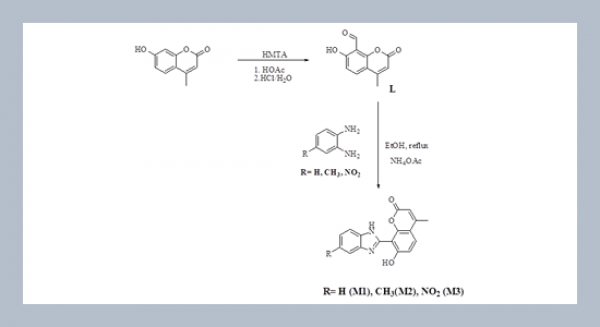REFERENCES
- [1] Dalton, C. M. 2009. Strategic alliances: There are battles and there is the war. Business Horizons, 52(2): 105-108.
- [2] Wu, W. Y., Shih, HA. and Chan HC. 2009. The analytic network process for partner selection criteria in strategic alliances. Expert Systems with Applications, 36: 4646-4653.
- [3] Yang, J., Wang, J., Wong C. WY. and Lai, KH. 2008. Relational stability and alliance performance in supply chain. Omega, 36: 600-608.
- [4] Das, T. K., and Teng, B. S. 2000. A resource-based theory of strategic alliances. Journal of management, 26(1): 31-61.
- [5] Chawla, C., Mangaliso, M., Knipes, B., and Gauthier, J. 2012. Antecedents and implications of uncertainty in management: A historical perspective. Journal of Management History,18(2): 200-218.
- [6] Yi, Y., Jeon, H., and Choi, B. 2013. Segregation vs aggregation in the loyalty program: the role of perceived uncertainty. European Journal of Marketing. 47(8):1238-1255.
- [7] Ghosh, S., Bhowmick, B., and Guin, K. K. 2014. Perceived Environmental Uncertainty for Startups: A Note on Entrepreneurship Research from an Indian Perspective. Technology Innovation Management Review, 4(8).
- [8] Lueg, R., and Borisov, B. G. 2014. Archival or perceived measures of environmental uncertainty? Conceptualization and new empirical evidence. European Management Journal, 32(4): 658-671.
- [9] Premkumar, G.., Ramamurthy, K. and Stoak, C. S. 2005. Information Processing View of Organizations: An Exploratory Examination of Fit in the Context of Interorganizaitonal Relationship, Journal of Management Information Systems, 22(1): 257-294.
- [10] Pavlou, P. A., Liang, H. and Xue, Y. 2007. Understanding and Mitigating Uncertainty in Online Exchange Relationships: A Principal-Agent Perspective, MIS Quarterly, 31(1): 105-136.
- [11] Zsidisin, G. A. 2002. Defining supply risk: A grounded theory approach. Decision Sciences Institute Annual Meeting, San Diego, CA.
- [12] Dimoka, A., Hong, Y., and Pavlou, P. A. 2012. On product uncertainty in online markets: Theory and evidence. MIS Quarterly, 36.
- [13] Knobloch, L. K., and Solomon, D. H. 2002. Information Seeking Beyond Initial Interaction. Human Communication Research, 28(2): 2413-257.
- [14] McCarter, M. W., and Northcraft, G. B. 2007. Happy together? Insights and implications of viewing managed supply chains as a social dilemma. Journal of Operations Management, 25(2): 498-511.
- [15] Werts, C. E., Linn, R. L. and Jöreskog, K. G. 1974. Intraclass reliability estimates: testing structural assumptions. Education and Psychological Measurement, 34(1): 25-33.
- [16] Wu, W. Y., Shih, HA. and Chan HC. 2009. The analytic network process for partner selection criteria in strategic alliances, Expert Systems with Applications, 36:4646-4653.
- [17] Pierce, J. R., Kilduff, G. J., Galinsky, A. D., and Sivanathan, N. 2013. From Glue to Gasoline How Competition Turns Perspective Takers Unethical. Psychological science.
- [18] Adams, J. H., Khoja, F. M., and Kauffman, R. 2012. An empirical study of buyer–supplier relationships within small business organizations. Journal of Small Business Management, 50(1): 20-40.
- [19] Wilson, N. 2014. When Higher Quality Does Not Translate to Higher Prices: A Case of Quality and Specialty Coffees from the Cup of Excellence Auctions. In 2014 Annual Meeting, July 27-29, 2014, Minneapolis, Minnesota (No. 170701). Agricultural and Applied Economics Association.
- [20] Noordewier, T. G., John, G., and Nevin, J. R. 1990. Performance outcomes of purchasing arrangements in industrial buyer-vendor relationships. Journal of marketing, 54(4): 80-93.
- [21] Zsidisin, G. A. and Ellram L. M. 2003. An agency theory investigation of supply risk management. Journal of Supply Chain Management. 39(3):15-27.
- [22] Miller, J. G., and Roth, A. V. 1994. A taxonomy of manufacturing strategies. Management Science, 40(3): 285-304.
- [23] Chin, W. W. 1998. The partial least squares approach to structural equation modeling. Modern methods for business research, 295(2): 295-336.
- [24] Chin, W. W., and Newsted, P. R. 1999. Structural equation modeling analysis with small samples using partial least squares.
- [25] Werts, C. E., Linn, R. L. and Jöreskog, K. G. 1974. Intraclass reliability estimates: testing structural assumptions. Education and Psychological Measurement, 34(1):25-33.
- [26] Fornell, C., and Larcker, D. F. (1981). Evaluating structural equation models with unobservable variables and measurement error. Journal of marketing research, 39-50.
- [27] Barclay, D., Higgins, C., and Thompson, R. 1995. The partial least squares (PLS) approach to causal modeling: Personal computer adoption and use as an illustration. Technology studies, 2(2): 285-309.
- [28] Monczka, R. M., Petersen, K. J., Handfield, R. B., and Ragatz, G. L. 1998. Success Factors in Strategic Supplier Alliances: The Buying Company Perspective. Decision Sciences, 29(3): 553-577.
- [29] Zsidisin, G. A., Panelli, A. and Upton, R. 2000. Purchasing organization involvement in risk assessments, contingency plans, and risk management: an exploratory study. Supply Chain Management, 5(4): 187-197.















